Two of the South Asian galleries are filled with nearly 50 paintings from the collection of Drs. Shantaram and Sunita Talegaonkar, who for decades have supported Indian art at VMFA. Assembled over nearly 25 years, these paintings represent the Talegaonkars’ yearnings both to investigate connections to their own heritage and to explore commonalities among the multiple cultures their lives have traversed.
The show’s thematic arrangement encourages the viewer to consider images created across periods and places. A prelude in the first gallery features the collectors’ first acquisition: a set of paintings depicting musical modes. The exhibition then continues with illustrations from narrative texts, devotional religious images, paintings considering romantic love, and finally historical portraits and genre scenes.
Subthemes emerge within these loosely organized sections, sometimes extending between them, but when viewed broadly, the Talegaonkar collection especially gives shape to the political and artistic landscape of 18th- and 19th-century India, when the subcontinent became increasingly fragmented into rival states. This vision of a decentralized courtly India inspires the exhibition’s title.
Exhibition Highlights
 Page from a Harivamsha Series: The Armies of Balarama and Jarasandha Meet in Combat, ca. 1800–1815, Attributed to Purkhu (active ca. 1780–ca. 1820), Punjab Hills, Kangra, opaque watercolor, gold, and silver on paper. Collection of Drs. Shantaram and Sunita Talegaonkar, L2022.10.1
Page from a Harivamsha Series: The Armies of Balarama and Jarasandha Meet in Combat, ca. 1800–1815, Attributed to Purkhu (active ca. 1780–ca. 1820), Punjab Hills, Kangra, opaque watercolor, gold, and silver on paper. Collection of Drs. Shantaram and Sunita Talegaonkar, L2022.10.1
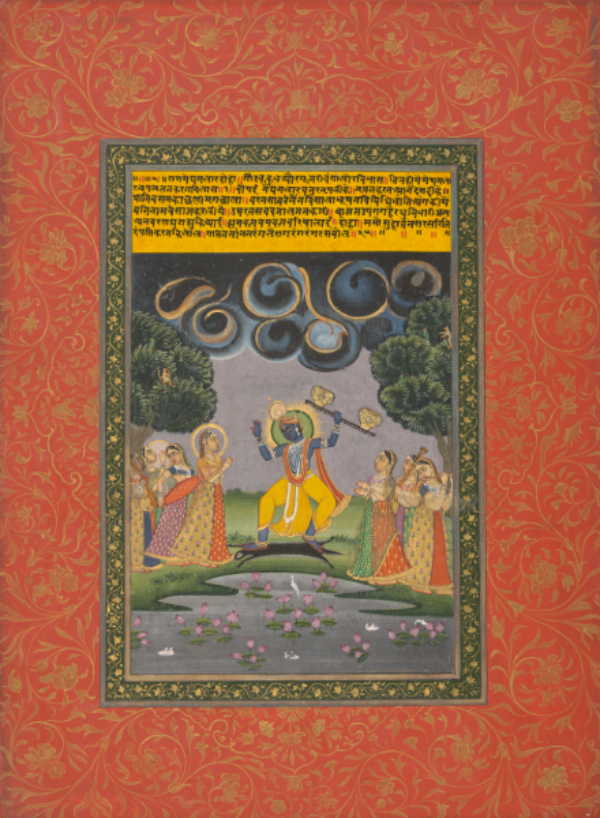 Page 25 from a Ragamala Series: Megha Malar Raga, Rajasthan, Jaipur, ca. 1800–1810, opaque watercolor and gold on paper. Collection of Drs. Shantaram and Sunita Talegaonkar, L2022.10.25
Page 25 from a Ragamala Series: Megha Malar Raga, Rajasthan, Jaipur, ca. 1800–1810, opaque watercolor and gold on paper. Collection of Drs. Shantaram and Sunita Talegaonkar, L2022.10.25
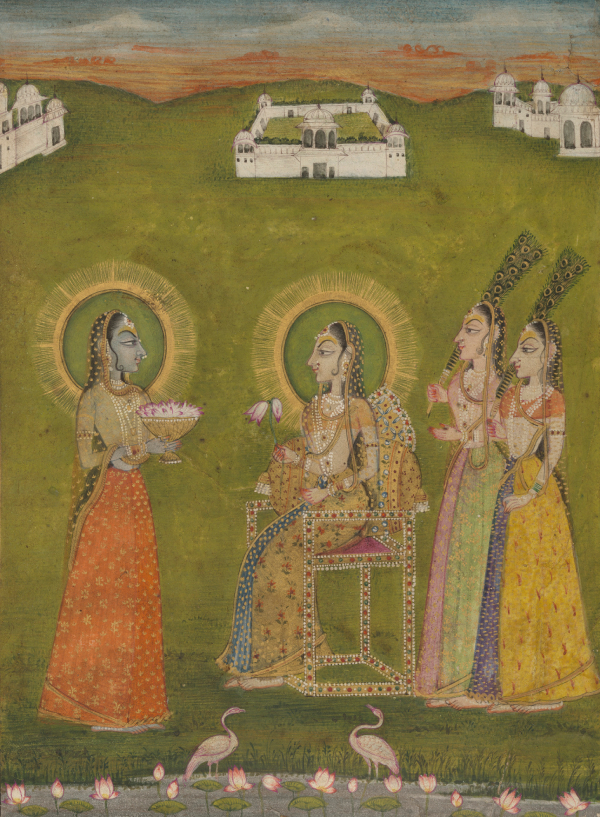 Krishna Offering Lotuses to the Enthroned Radha, second half of 18th century, Rajasthan, Kishangarh, opaque watercolor and gold on paper. Collection of Drs. Shantaram and Sunita Talegaonkar, L2022.10.8
Krishna Offering Lotuses to the Enthroned Radha, second half of 18th century, Rajasthan, Kishangarh, opaque watercolor and gold on paper. Collection of Drs. Shantaram and Sunita Talegaonkar, L2022.10.8
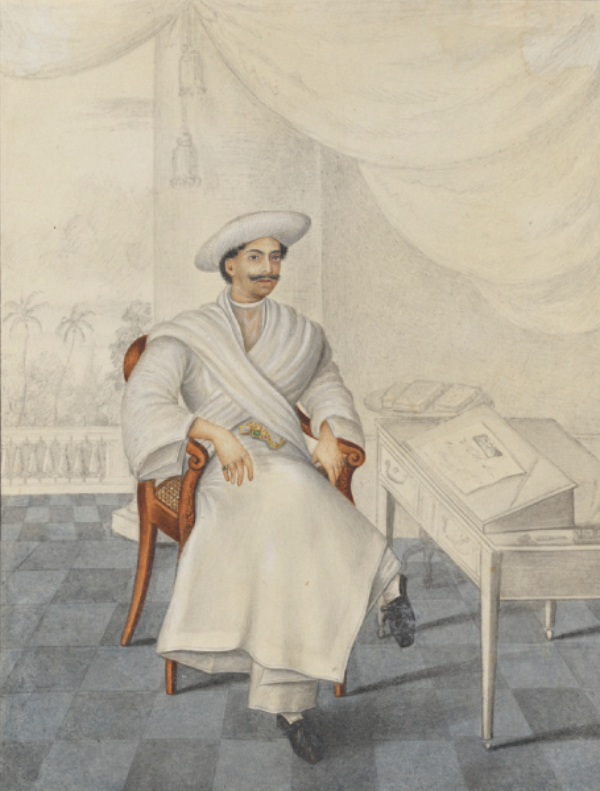 A Bengali Notable, ca. 1845, Shaikh Muhammad Amir of Karraya (active 1830s–1840s), West Bengal, Kolkata, opaque watercolor on paper. Collection of Drs. Shantaram and Sunita Talegaonkar, L2022.10.9
A Bengali Notable, ca. 1845, Shaikh Muhammad Amir of Karraya (active 1830s–1840s), West Bengal, Kolkata, opaque watercolor on paper. Collection of Drs. Shantaram and Sunita Talegaonkar, L2022.10.9
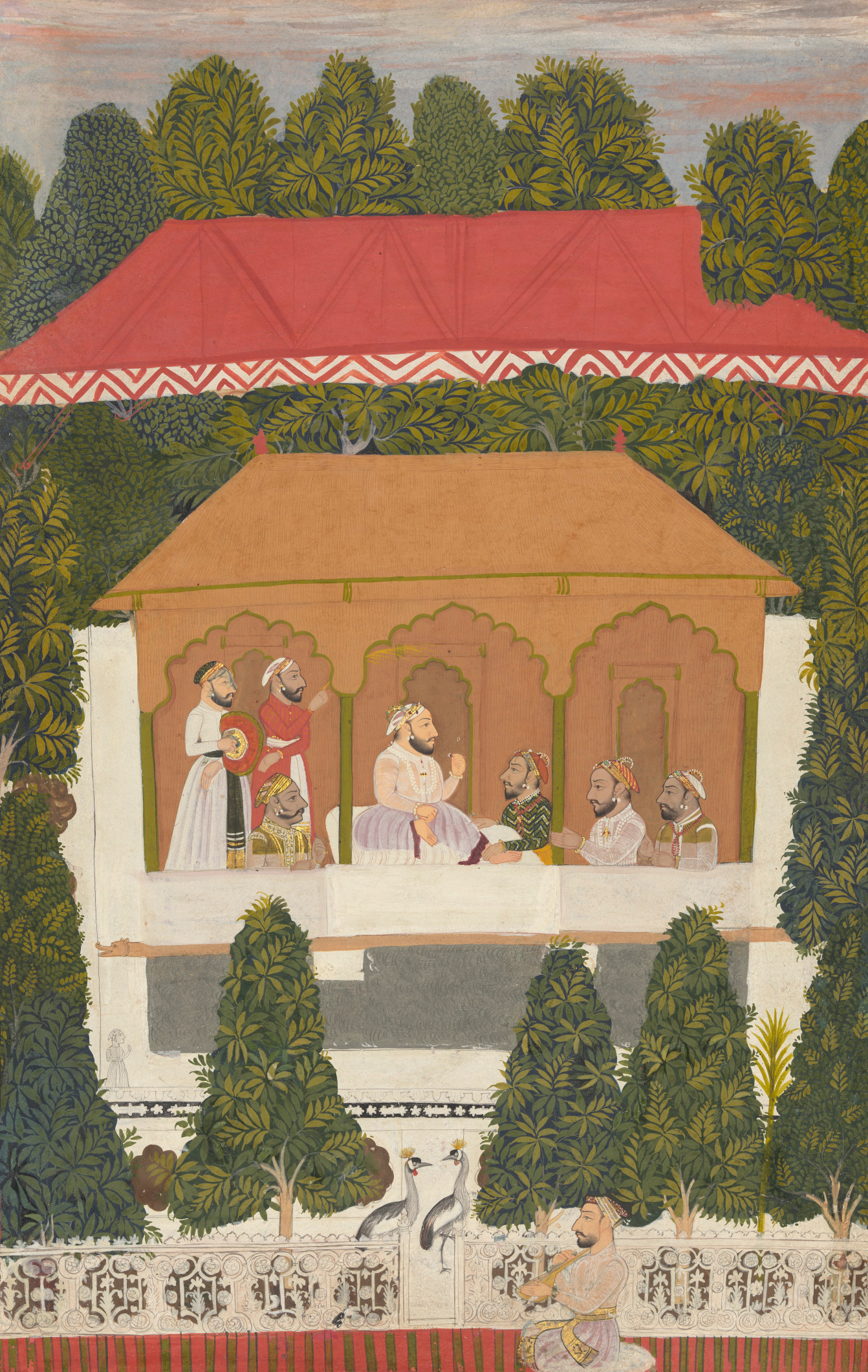 Maharana Sangram Singh in a Lush Garden, ca. 1730, Rajasthan, Udaipur, opaque watercolor, gold, and silver on paper. Collection of Drs. Shantaram and Sunita Talegaonkar, L2022.10.46
Maharana Sangram Singh in a Lush Garden, ca. 1730, Rajasthan, Udaipur, opaque watercolor, gold, and silver on paper. Collection of Drs. Shantaram and Sunita Talegaonkar, L2022.10.46
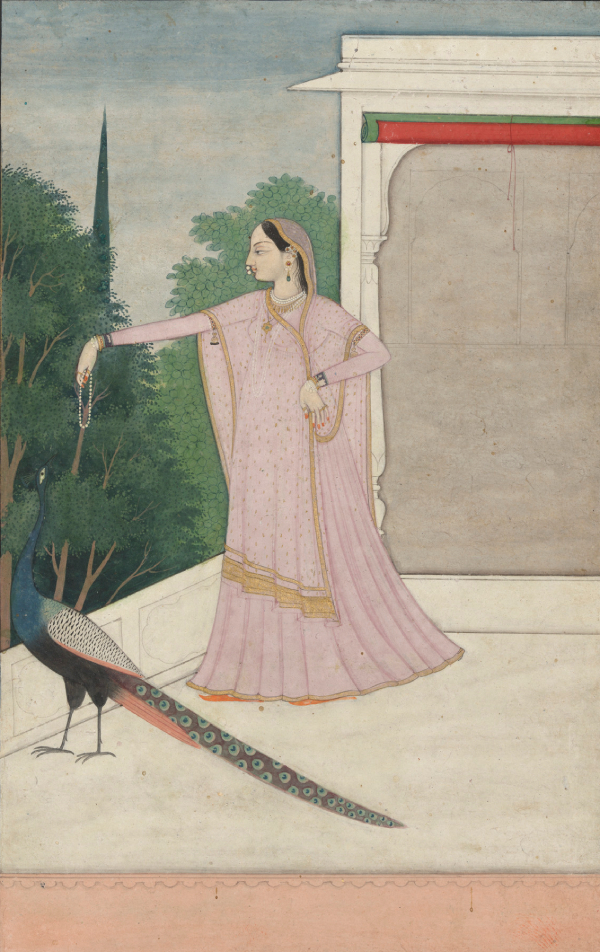 The Dejected Lover, ca. 1765, Punjab Hills, Guler, opaque watercolor and gold on paper. Collection of Drs. Shantaram and Sunita Talegaonkar, L2022.10.3
The Dejected Lover, ca. 1765, Punjab Hills, Guler, opaque watercolor and gold on paper. Collection of Drs. Shantaram and Sunita Talegaonkar, L2022.10.3
Krishna Offering Lotuses to the Enthroned Radha (detail), second half of 18th century, Rajasthan, Kishangarh, opaque watercolor and gold on paper. Collection of Drs. Shantaram and Sunita Talegaonkar, L2022.10.8

